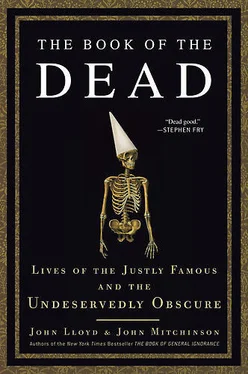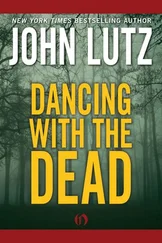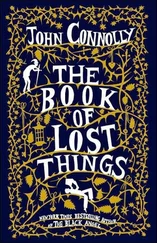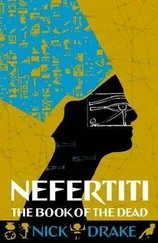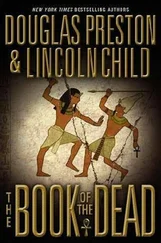Jenner thoroughly enjoyed life in Gloucestershire. He was a popular country-house guest, highly regarded as a witty raconteur, poet, and violinist. He was also a natty dresser. According to his friend Edward Gardner, he was usually to be seen in “a blue coat, and yellow buttons, buckskin, well polished jockey boots with silver spurs, and he carried a smart whip with a silver handle.” Like Ben Franklin and Epicurus, he loved like-minded company, and founded two clubs: the Convivio-Medical Society and the Medico-Convivial Society. They met in separate inns and had, as their names imply, similar interests but opposite priorities. Jenner was also a keen balloonist, a hobby that terrified the local farmers but was to lead him to his future wife, Catherine: His unmanned, varnished-silk balloon landed in the grounds of her father’s estate.
Edward and Catherine were married in 1788 and had four children. The eldest, Edward, died of tuberculosis, aged twenty-one. Jenner was devastated but, ever the scientist, used the blood from his son’s frequent bleedings to enrich his manure to see if it had any effect on the growth of plants.
He was forty-seven when he made the discovery that would make him famous. By the late eighteenth century, 60 percent of the population of Europe was infected with smallpox. A third of those who contracted the disease died and survivors were left horribly disfigured. Elsewhere in the world, the toll was even worse: An estimated 95 percent of the indigenous peoples in the Americas perished from the disease after the conquistadores brought it with them in the fifteenth century. When Jenner was a child, the only hope of staving it off was a process called variolation (variola was the scientific name for smallpox, from the Latin varius , “spotty”) where dried smallpox scabs were rubbed into a cut on the hand in the hope that the body would develop resistance to the full-blown disease. It was reasonably effective, but the side effects were unpleasant and the risk of contracting smallpox remained unacceptably high.
Jenner had suffered the discomfort of variolation as a child—it also involved being starved and purged—and though he introduced it to his village practice as a standard procedure, he began experimenting to see if a safer alternative could be found. Among his patients, he noticed that milkmaids rarely caught smallpox but regularly needed treating for cowpox, a related but much less virulent infection contracted from milking cows. He wondered if country lore that cowpox protected you from smallpox might have some basis in truth.
On May 14, 1796, he took some discharge from cowpox pustules on the hand of a milkmaid called Sarah Nelmes and inserted it into an incision in the arm of eight-year-old James Phipps, the son of his gardener. Other than a slight fever, Phipps was fine. Six weeks later, Jenner inoculated him with pus from a smallpox sufferer. Again, no reaction. This wasn’t the first time it had been tried—a Dorset farmer called Benjamin Jesty had deliberately infected his wife and children with cowpox during a local smallpox epidemic twenty years earlier—but it was the first time it had been done scientifically. Two years later, having performed the procedure, which he named vaccine inoculation, or vaccination for short (from the Latin vacca , “cow”), on more than twenty patients, Jenner published the paper that would change everything: Inquiry into the Causes and Effects of the Variolae Vaccinae… known by the name of the Cow-pox (1798).
The conclusion that Jenner reached was that the cowpox vaccine was safer than variolation and provided indefinite protection against smallpox. It could also be inoculated person to person. News of the Inquiry spread all over the world, and within two years it had been translated into Latin, German, French, Italian, Dutch, and Spanish. Jenner’s life changed overnight. “I have decided,” he declared, “no matter what trials and tribulations lie before me, to dedicate the whole of my life to ridding the world of smallpox.” This modest country doctor became “the Vaccine Clerk to the World,” sending samples of his vaccine to everyone who needed it. In his own garden at Berkeley, he built a small hut, which he called the Temple of Vaccinia, where he vaccinated the poor for free. He was feted by London society; was presented to George III and Queen Charlotte; met the tsar of Russia and the king of Prussia; received the freedom of the cities of London, Dublin, Edinburgh, and Glasgow; and was awarded honorary degrees from Oxford and Cambridge.
Messages of admiration flooded in from all over the world. Thomas Jefferson wrote offering “to render you my portion of the tribute of gratitude due to you from the whole human family. Medicine has never before produced any single improvement of such utility.” Native Americans sent him a wampum belt and taught their children his name, which they commended to the Great Spirit. The British MP William Wilberforce commented that there was “no man who is so much inquired after, by Foreigners when they arrive in this country.” Jenner even corresponded with Napoleon, securing the release of two English prisoners, one of them a relative. Napoleon had already issued instructions for the mass vaccination of the French people. “Ah Jenner,” he exclaimed, “I can refuse him nothing.”
Not everyone was convinced: The variolators saw the vaccine as a serious threat to business, and other doctors questioned whether Jenner’s sampling and recording methods were rigorous enough. Some patients were wary, too—scared that they might sprout horns or udders if excretions derived from cows were injected into them. But both the army and navy promptly adopted vaccination as standard procedure and many of Britain’s most eminent physicians came out in Jenner’s support. Nevertheless, the medical authorities dragged their feet: It took until 1840 for the government to set up a national program of free vaccination.
By then, Jenner had been dead for seventeen years. In 1815 his wife, like his eldest son, fell victim to tuberculosis, and Jenner himself, increasingly infirm and tired of the public attention, returned to his haven at Berkeley. He remained there until his own death eight years later. A year before he died, he was appointed Physician Extraordinary to George IV.
In his last years, Jenner occasionally treated patients, but spent of most his time out among nature, his original inspiration, finishing his investigations into the migration of birds and importing and propagating exotic fruits. He also made arrangements to help James Phipps, the cowpox guinea pig, who had also fallen ill with tuberculosis. Poor Phipps had been variolated at least twenty times after Jenner’s original experiment by other doctors keen to test the results for themselves. As a mark of gratitude, Jenner designed and built Phipps a small cottage and personally supervised the laying out of the garden and vegetable patch that went with it. Of the other players in the cowpox drama, nothing more was heard of the milkmaid Sarah Nelmes, but the hide of her cow Blossom still hangs in St. George’s Hospital, Tooting. The cow’s horns—rather like bits of the True Cross—have multiplied since her death: At least six “authentic” pairs have been recorded.
It’s hard to overstate Jenner’s legacy. He founded the discipline we now call immunology. The modern equivalent of his discovery would be if a cure for cancer were announced tomorrow. Smallpox, the speckled devil, “the most dreadful scourge of the human species” for millennia, was declared finally eradicated by the World Health Organization in 1980, just as Jenner had predicted it would be back in 1801.
The joy I felt as the prospect before me of being the instrument destined to take away from the world one of its greatest calamities was so excessive that I found myself in a kind of reverie.
Читать дальше
